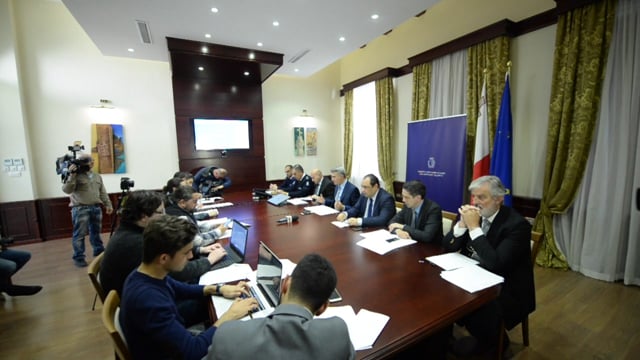[WATCH] St Julian’s scores highest crime rate, five times national average
With 17,298 offences reported in 2016, crime increased by 9% over the previous year with pick-pocketing mostly responsible for the increase in reports


St Julian’s continued to register the highest crime rate, at five times the national average, according to the Malta Crime Report 2016 launched this afternoon.
The report, compiled by criminologist Saviour Formosa, was presented to the press during a press conference hosted by Home Affairs Minister Carmelo Abela.
According to the report, pick-pocketing, domestic violence, fraud, drugs and arson are on the increase, although the increase on reported crime in 2016 was much lower than expected.
With 17,298 offences reported in 2016, crime increased by only 0.9% over the previous year - or 160 crimes - with pick-pocketing mostly responsible for the increase in reports as the category saw an increase of 21%.
The home affairs minister said that it was imperative to act upon the conclusions highlighted in the report, particularly with regards to abnormal trends including pick-pocketing and psychological harm.
He however reassured that Malta remained a safe country.
“Malta remains a safe country to live in or visit but the report can help the police enhance its investigations,” he said.
The minister announced that a nation-wide CCTV network will be rolled up across major hotspots in Malta, once inter-departmental discussions are concluded.
An increased police presence on the streets was also sought to serve as a great deterrent and help reduce the number of crimes reported even further, he said.
Crime in figures
Pick-pocketing reports alone increased by 417 in 2016 to 2,447 instances, or 14% of all crimes, up from 2030 in 2015.
Ironically, most other categories of theft registered a decrease, apart from theft from occupied residencies and theft from vehicles, which registered a 12% and 25% increase respectively.

The figures show that common theft went down by 304 cases – or 26% – reversing the previous year’s sharp increase.
Overall, theft comprosed 51% of all offences reported in 2016.
The second highest reported offence fell under the category of damages, which registered a slight decrease to 23% of all offences.
Bodily harm, on the other hand, fell to 5% of reported offences.
Domestic violence maintained its consistent increase year on year, reaching 7% of all offences reported last year. These reports were split practically equally between psychological harm and slight bodily harm.
Fraud registered a 6% increase over 2015.
These five crime categories – theft, damages, domestic violence, bodily harm and fraud – comprised 90% of all crime reports recorded in 2016.
Abela confirmed that the home affairs ministry was currently in discussion with the parliamentary secretariat for local councils as to how and where to introduce the cameras and whether the network would be screened live 24 hours a day or use the recorded footage as a fall-back option.

.jpeg)




.jpg)










.png)




